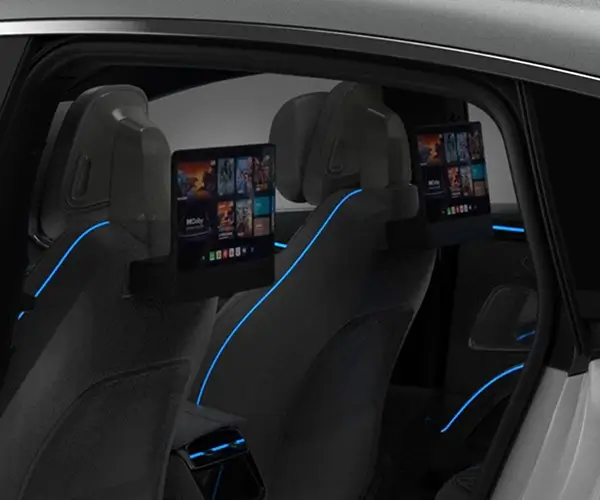Sure! Here's the first part of the soft article on "Bluetooth Controlled Servo Motor", fitting your requested format.

In the rapidly evolving landscape of robotics and automation, one technological marvel stands out for its versatility and user-friendly interface—the Bluetooth controlled servo motor. Imagine a tiny powerhouse capable of delivering precise movement, effortless control, and flexible integration—all while communicating wirelessly via your smartphone, tablet, or other Bluetooth-enabled devices. This remarkable fusion of miniature engineering and classic servo motor technology is transforming how hobbyists, engineers, and professionals approach automation.
The Rise of Wireless Control in Robotics Traditional servo motors are quite familiar—they are the workhorses behind robotic arms, remote-controlled cars, and aerospace applications. They operate through direct wired connections, which, while reliable, impose restrictions on design flexibility, mobility, and ease of use. The advent of Bluetooth technology has shifted this paradigm dramatically, bringing wireless convenience to servo motor systems.
Bluetooth controlled servo motors eliminate the tangled mess of wires, allowing for cleaner setups and smoother movement. They are perfectly suited for applications where distance, portability, or ease of setup is paramount. Imagine a drone adjusting its camera angle mid-flight with simple Bluetooth commands from a tablet or a wearable device controlling a robotic pet’s tail wagging. The potential applications are practically limitless.
How Bluetooth Controlled Servo Motors Work At their core, Bluetooth servo motors integrate a small Bluetooth module—often based on popular modules like the HC-05 or BLE (Bluetooth Low Energy)—with a standard servo motor and a microcontroller, such as an Arduino, ESP32, or Raspberry Pi. Through this setup, the microcontroller interprets Bluetooth signals sent from a user’s device and converts them into precise mechanical movements.
When you pair the Bluetooth device with the servo, commands like “rotate 45 degrees,” “stop,” or “move to position X” are transmitted wirelessly. The microcontroller receives these commands, processes them, and controls the servo’s position accordingly. This entire process happens in milliseconds, creating a seamless and responsive experience.
Advantages of Bluetooth Control for Servo Motors
Wireless Flexibility: No more cumbersome wiring or limited mobility. You can control multiple devices from a distance without physical connection, opening up new possibilities for design and usability.
Ease of Use: Most Bluetooth servo systems are compatible with smartphone apps, making control accessible even for beginners. Users can tap, swipe, or tilt their devices to manipulate the servo.
Multiple Device Management: With Bluetooth’s capability to connect to multiple devices, operators can control several servo motors independently or simultaneously, ideal for complex robotics or multi-part projects.
Cost-Effective and Compact: Integrating Bluetooth modules into standard servo setups adds minimal cost and space, keeping systems lightweight and affordable.
Real-World Applications and Innovations Bluetooth controlled servo motors are at the heart of a new wave of innovation across multiple sectors:
Hobbyist Projects: Drone pilots, robotic pet enthusiasts, and DIY enthusiasts utilize Bluetooth servos to create customizable, real-time response systems that are simple to deploy.
Educational Tools: Schools are incorporating Bluetooth servo kits into STEM curricula, encouraging students to learn programming, automation, and electronics through hands-on experimentation.
Home Automation: Robotic blinds, smart curtains, and adjustable lighting fixtures are turning into more intelligent and user-friendly devices thanks to Bluetooth servo control.
Industrial Automation and Maintenance: While more common in consumer applications, Bluetooth servos are also finding their way into prototype industrial systems, offering flexible, remote adjustments for machinery or equipment.
Key Components of a Bluetooth Servo System To build or understand such a system, recognize the primary parts involved:
Servo Motor: The actuator providing precise rotational or linear movement. Bluetooth Module: The wireless communication interface. Microcontroller: The brain that processes commands and controls the servo. Power Supply: Ensures the servo and electronics operate smoothly. User Interface: Mobile apps or custom control panels to send commands.
Design Considerations When working with Bluetooth-controlled servo motors, several factors influence performance and usability:
Range: Bluetooth typically offers a 10 to 100-meter communication radius, depending on the version and environment. For outdoor or large-scale applications, Bluetooth 5.0 and BLE 5.0 improve the range significantly.
Power Consumption: Especially for portable projects, energy efficiency is key. BLE modules excel here, offering low-power communication ideal for battery-powered systems.
Response Time: Proper pairing and coding ensure your servo reacts swiftly to commands—a critical factor for real-time robotics.
Compatibility: Confirm your Bluetooth module, microcontroller, and control app are compatible and easy to integrate.
Kpower has delivered professional drive system solutions to over 500 enterprise clients globally with products covering various fields such as Smart Home Systems, Automatic Electronics, Robotics, Precision Agriculture, Drones, and Industrial Automation.




































